A few months ago, while answering the questions of a Canadian anthropologist, Marc, to prepare his next trip to Chhattisgarh, I advised him not to miss Sirpur and its Buddhist temples which so marked His Holiness the Dalai Lama.
In this article, I will explain why Sirpur town should be on the program of your trip in Chhattisgarh.
I will tell you why you should visit this rich archaeological area of Sirpur in Chhattisgarh, quoting some historical points that make it a grandiose place and the sites to visit.
You will also find useful information to prepare your trip, as well as interesting festivals.

Article summary.
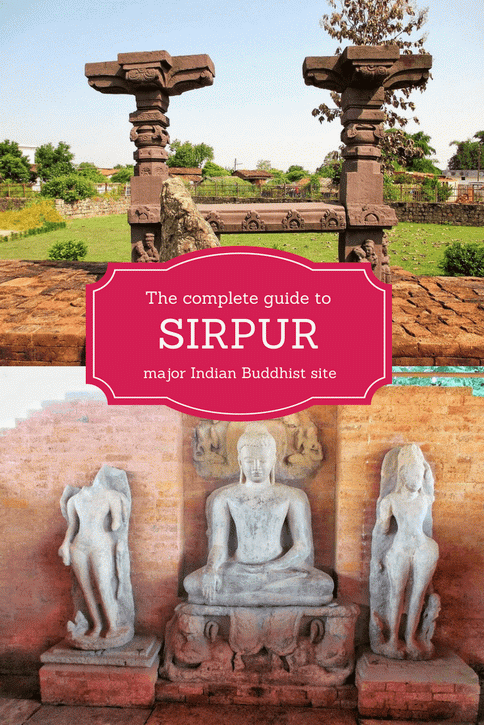
What is the history of Sirpur Chhattisgarh?
“Really extraordinary, Sirpur’s story is glorious. I take with me the memories of Lord Buddha.” His Holiness Dalai Lama during his first visit to Sirpur in March 2013.
Through these few words, His Holiness the Dalai Lama sums up well all the historical and spiritual importance of Sirpur.
His Holiness now returns there regularly, as in 2014 when He meditated in the caves where Nagarjuna, the most important Buddhist philosopher after Buddha, had meditated.
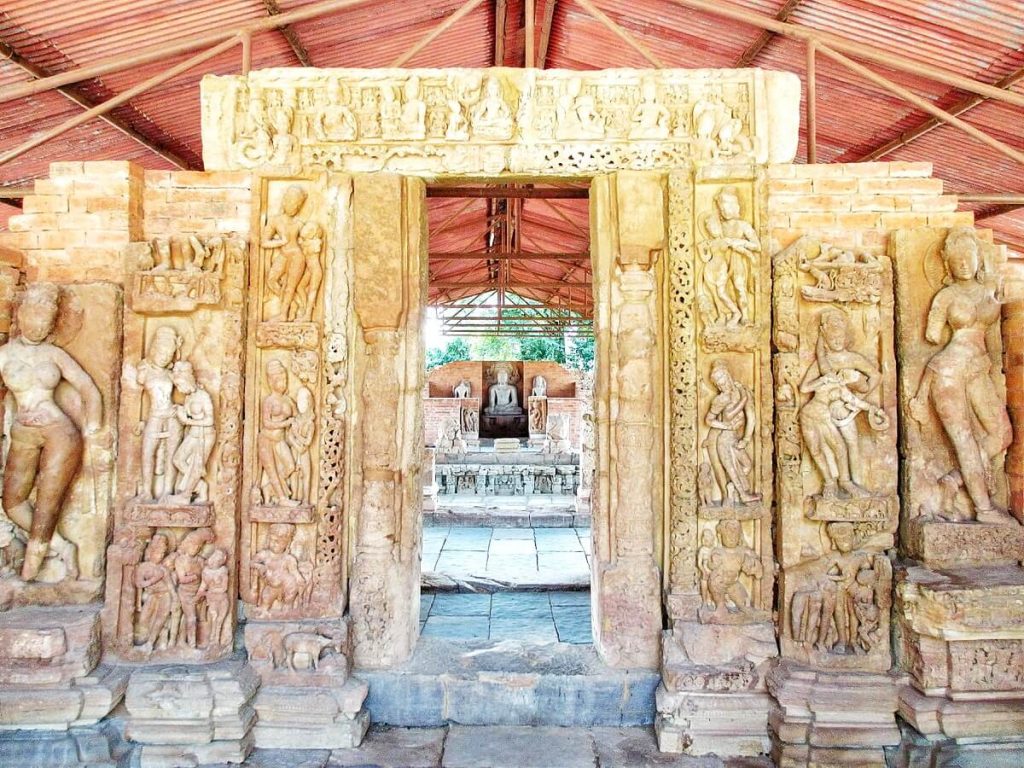
Inscriptions from between the 5th and 8th centuries mention a town called Sirpur or Shripura, capital of the Somvanshi Kings.
The city’s influence as the seat of culture began when it became the capital of the Dakshin Koshal (now Chhattisgarh state) under the reigns of the Sarabhapuriya and Panduvanshi Kings.
Sirpur town then became a city of temples, Buddhist monasteries, lakes and ponds; the pillar of Buddhism in Central India and a major site of Buddhist India.
Between the 6th and 10th centuries, it would even have been larger than the territory of the Harappan civilization of the Indus Valley.

The famous pilgrim and scholar translator of the Buddhist Sutras, the Chinese Hieun Tsang (Xuanzang for the Chinese and Tripitaka for us), passed through this region during his “Journey to the West“, around 635.
He describes it in his “Report of the Journey to the West in the Age of the Great Tangs” as a great Kingdom full of practitioners of Mahayana Buddhism, led by a sovereign of great religious tolerance, Balarjuna.
Sirpur town attracted not only traders and travellers but also scholars and students from all over the world.
There were Shivaite, Vishnuite and Jain temples, together with more than 200 Buddhist monasteries and convents.
The city included a busy port and was a centre of international trade.
When I arrived in Sirpur, I was very surprised to discover a small tribal village, dozing on the banks of the Mahanadi River.
Later, I learned that His Holiness Dalai Lama had also spoken of a feeling of eternal peace on his first trip to Sirpur.
What are the most attractive elements of Sirpur town in Chhattisgarh state?
Laxman Mandir.
This 7th-century red brick temple stands in the middle of a well maintained green garden.
Dedicated to Vishnu, it was given the name Laxman temple when it was discovered by Lord Cunningham, a Briton, in 1862.
It is considered as one of the finest baked brick temples in India, so much its engravings are worked. Observe especially those of the door lintel and the shikhara, the central tower of the photo.
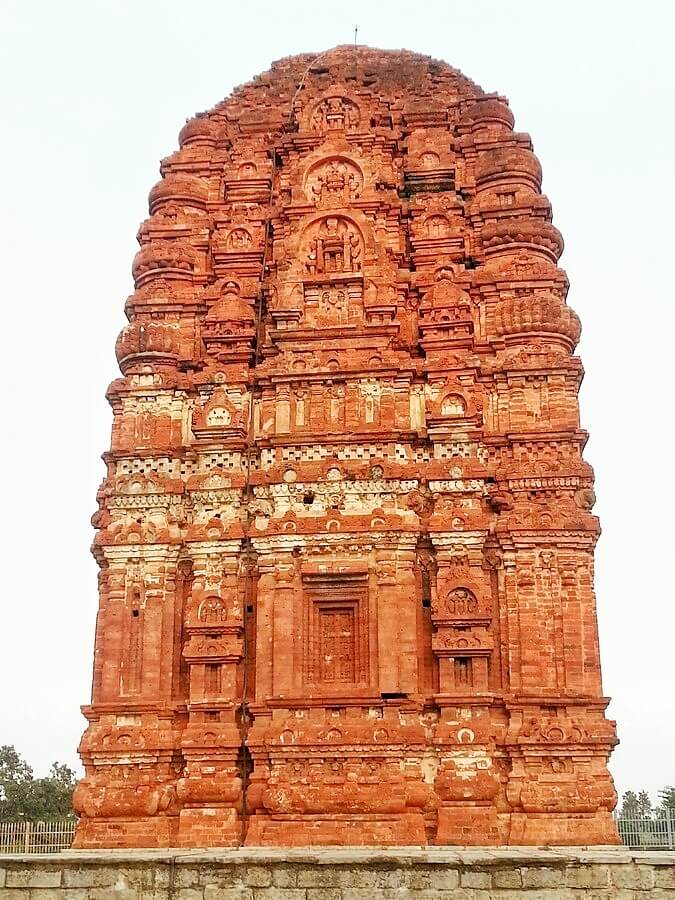
The adjacent museum contains the sculptures of the site, including the headless statue of Vishnu, in black granite. Unfortunately, the artworks are not very well highlighted, either in terms of lighting or information panels.
The temple and its gardens are the setting for the Sirpur National Dance and Music Festival, which takes place in January (see below for more information).
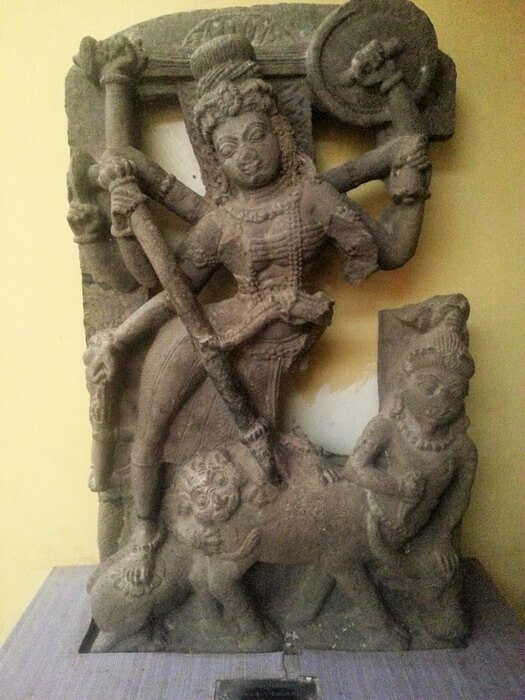
Teevardev complex, Khajuraho of Chhattisgarh.
The lintel at the beginning of my article serves as the entrance to this great Buddhist monastery of the 6th century, more often called “Buddha Vihara” or Buddha temple.
It is composed of two monasteries and a convent.
Its most remarkable elements are the larger-than-life statue of Buddha, all the engravings on the lintel and the many columns, such as the peacock elephant.
Many sculptures represent the Panchatantra, a very old collection of animal tales. Through animal stereotypes, this artwork explains the Indian principle of niti or how to behave wisely.
Jean de La Fontaine was largely inspired by the Panchatantra in several of his fables and many countries have taken up these tales in their literature.
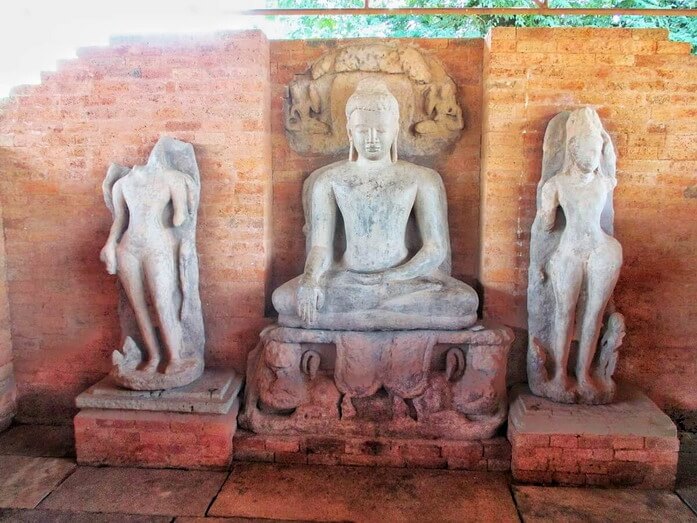
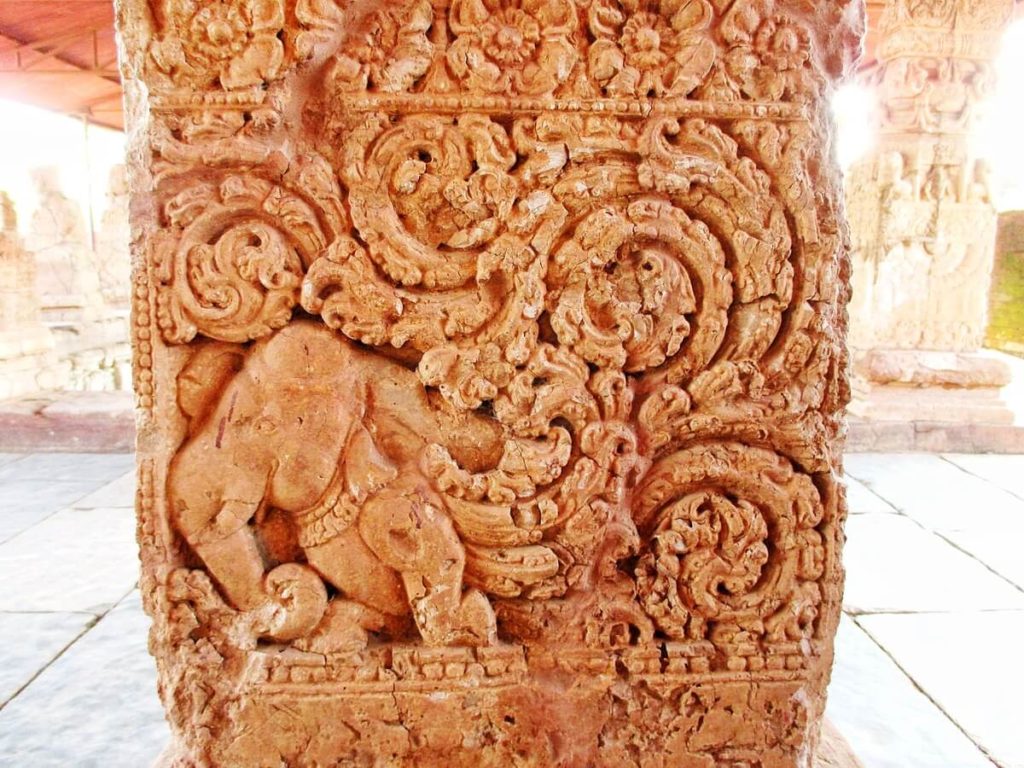
You will also notice the assembly of the bricks, made without mortar, embedded one in the other at the origin.
Another very striking detail are the lintel sculptures where we find scenes worthy of Kamasutra, as in Bhoramdeo in the North of Chhattisgarh, and the much more famous Khajuraho.
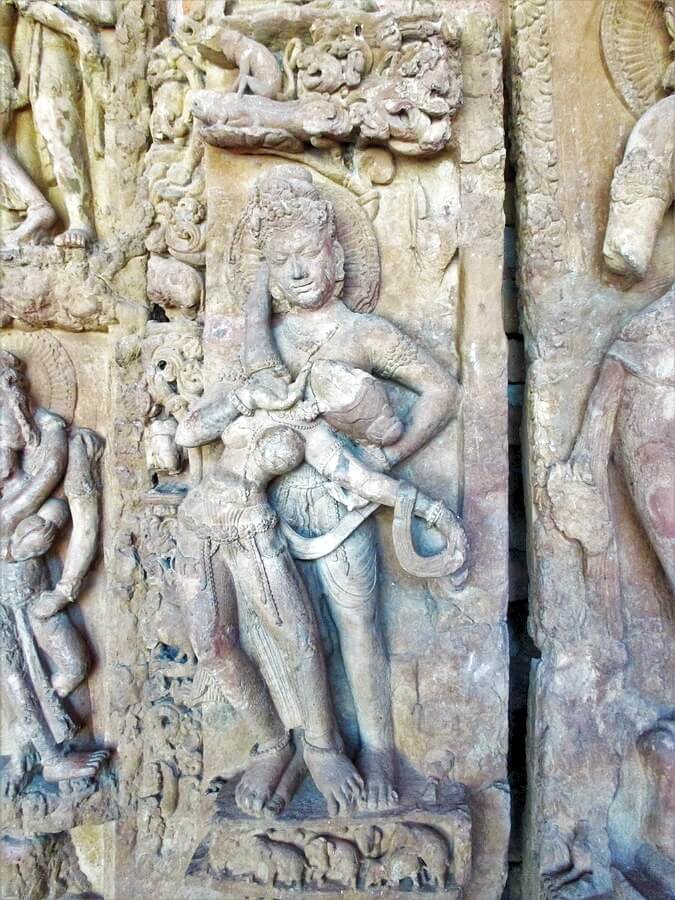
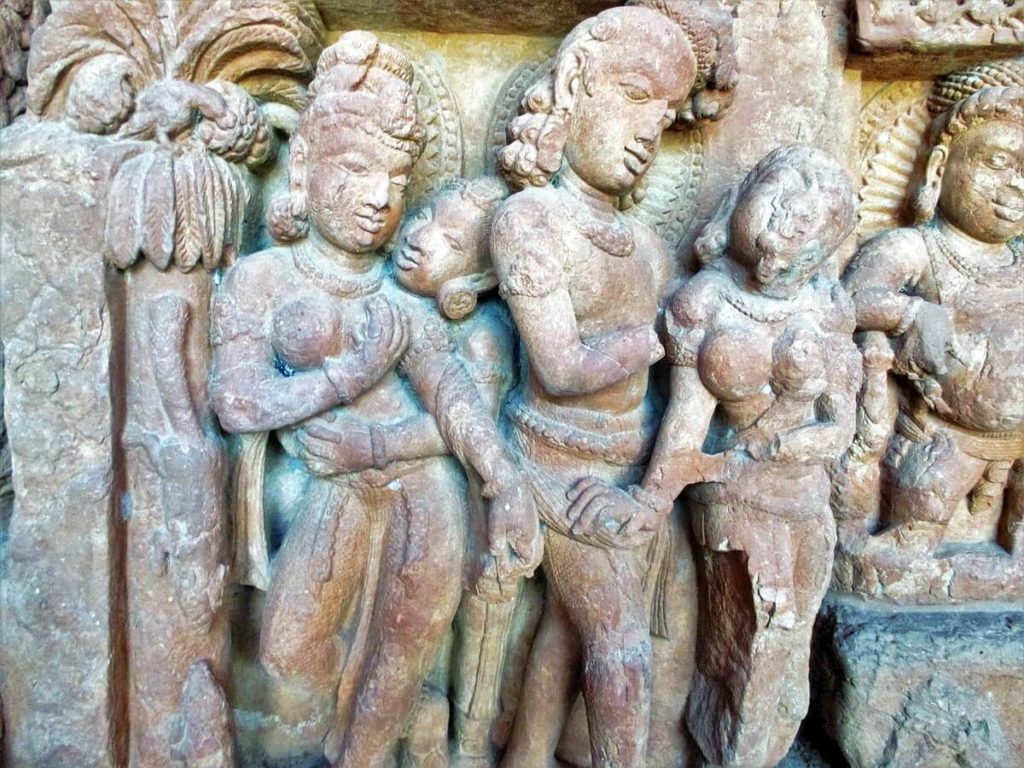
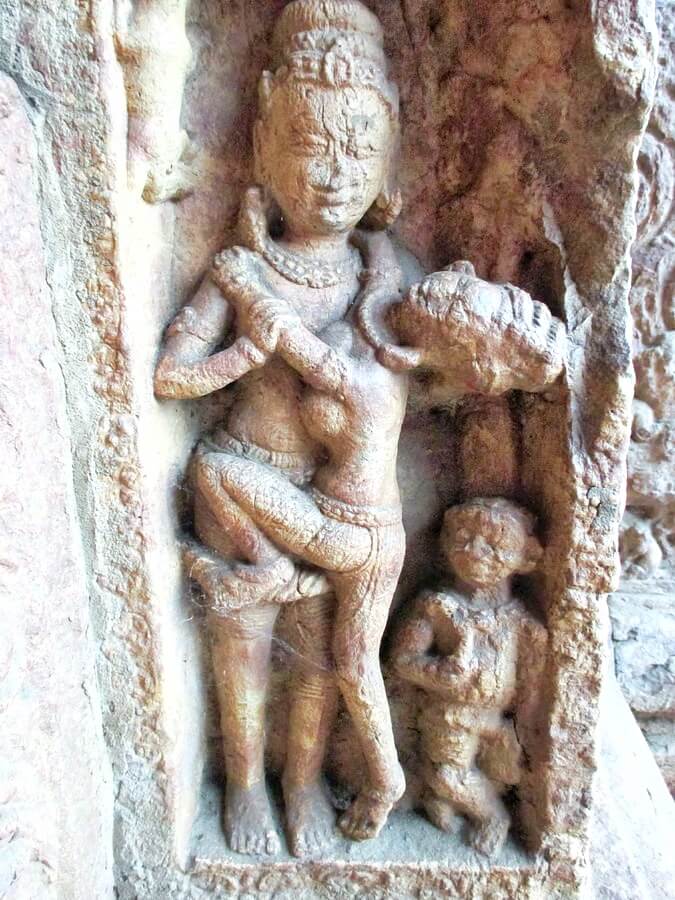
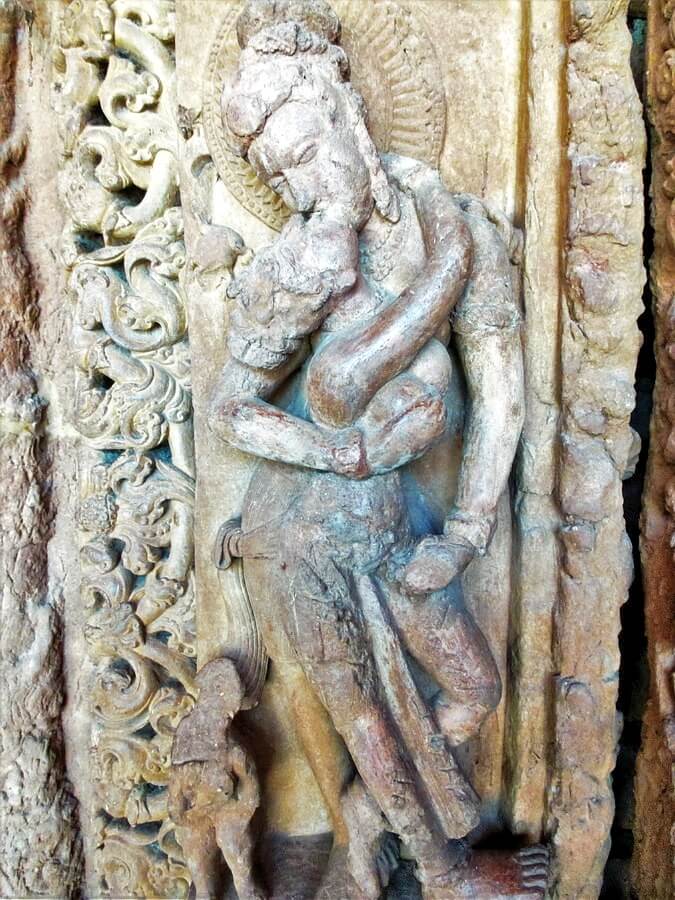
According to my guide, the monks wanted to represent the reality of life, both on a human and animal level. We also find a buffalo fight and a horde of elephants, whose final couple copulates under the eyes of the penultimate.
I contacted some of my friends archaeologists and anthropologists to find out whether this interpretation is the right one or whether, as I believe, it is rather the influence of Tantrism that was followed by the rulers of the time.
The puritanism that still prevails in India would almost make us forget that the country is at the origin of the kamasutra and that sexuality and eroticism were intimately linked to divine power. Isn’t the God Shiva represented by the lingam – male energy – nested in the yoni – female energy? And wasn’t the act of love considered a mystical experience?
The Indian archaeologist Hansmukh Seth explained to me that there are 3 interpretations to these sculptures:
- tantrism, especially through the erotic scenes of animals.
- the interpretation of my guide. The temple is the representation of the universe and the essential aspects of life must be shown. At the bottom of the outside walls, the “worst” category of life, animal life. Above, scenes from society. Human erotic scenes represent both a part of life and the continuous process of the next generation or society. At the very top the Gods and the celestial creatures, the apsaras, and the mythical hybrid creatures, the Vyalas.
- the erotic scenes represent the punishment that will destroy or the work of demons.
For Hansmukh, these 3 interpretations combine and depend on the God to whom the temple is dedicated. For example, we will find many erotic scenes in the temples of Shiva, associated with tantrism.
Baleshwar Mahadev Temple complex.
These beautiful remains date from the 7th century and were built in the Panchayatana style. There was an elevated main sanctuary, surrounded by 4 smaller ones at the four corners, two temples in honour of the royal ladies Ambadevi and Ambikadevi and the priest’s residence. The site was dedicated to Shiva of which we see vestiges of representation in the form of lingam.
Notice the side bun of the female statue. This is the hairstyle still adopted today by many tribes in Central India.
Among the photos of the rock paintings of Ongna – 10 000 to 15 000 BC – taken by Debayan, we find this headdress.
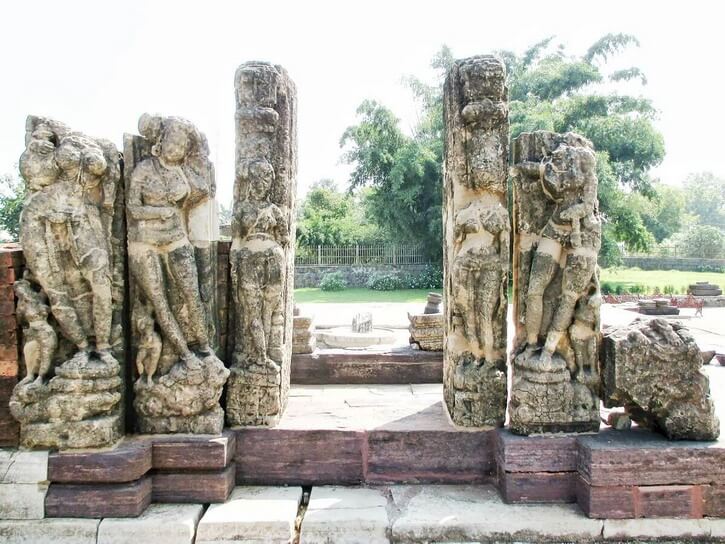
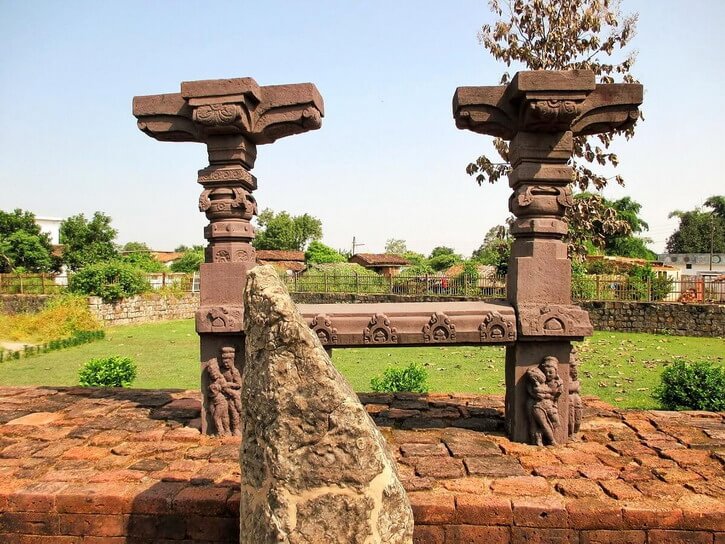
Surang Tila.
The excavation of this pyramidal temple dedicated to Shiva, dating from the 7th century, dates only to 2006-2007.
The structure measures 8 metres in height, and its upper platform is accessed by 30 steps deformed by an earthquake in the 12th century. It is this same catastrophe that would have devastated and buried Sirpur.
The best way to access it is at an angle, the climb up and down from the front being far too dangerous.
Like the previous complex, Surang Tila was panchayatan in style, with one main sanctuary and four others at the four corners. Its shape is more reminiscent of a Mayan temple.
It was accessed through the portal shown in the photo, after taking a purification bath in the nearby Mahanadi River.
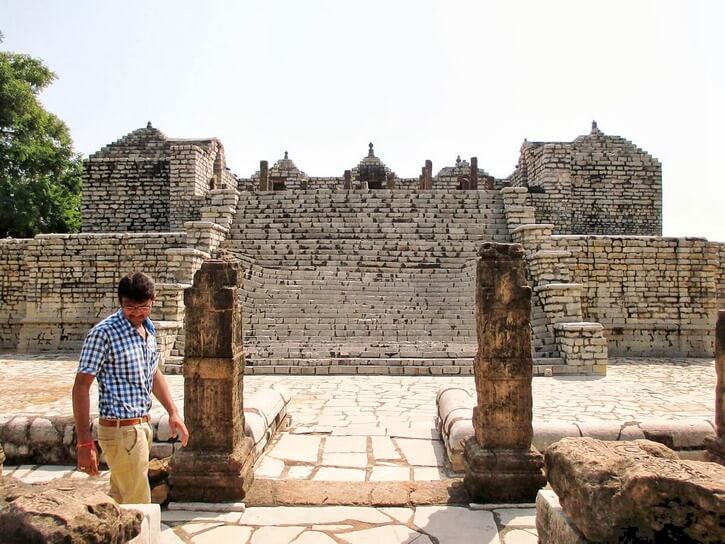
In the south was the Brahmin’s house, with a large attached water tank, in which the Brahmin bathed before entering the sanctuary.
Four lingams, supposed to represent the four castes, are sheltered in the temples. One is white, symbolizing that of the Brahmins. The second is red and represents the blood shed by the warrior, the Kshatriya caste. The yellow lingam represents the gold of the Vaishyas, the traders. At last, black is for the Shudras, the servants.
There were 32 pillars, all beautifully carved.
One of the temples is dedicated to Lord Ganesha.
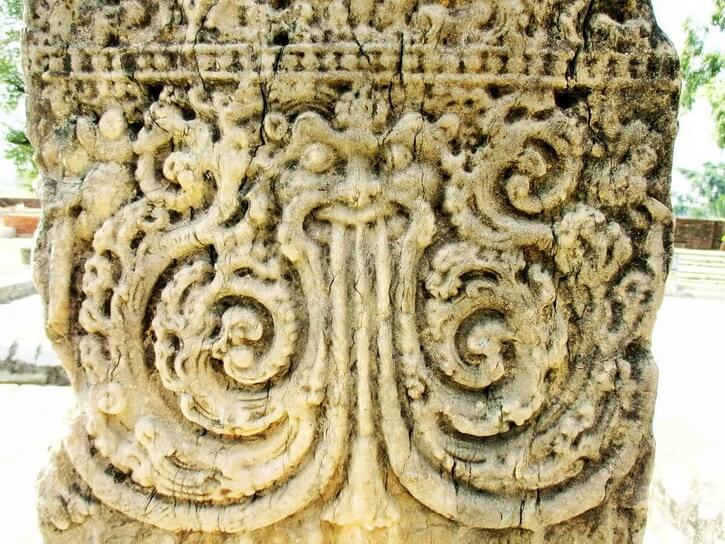
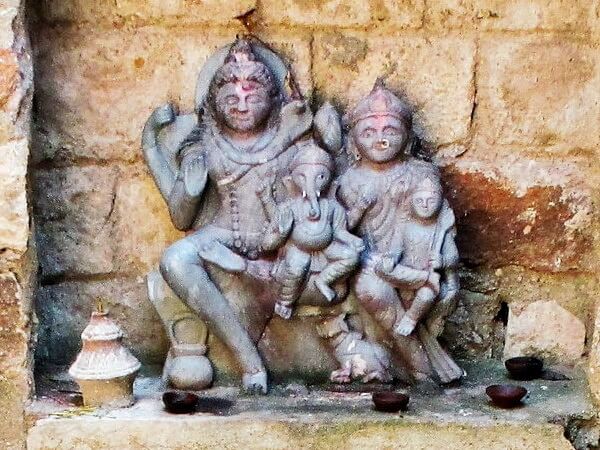
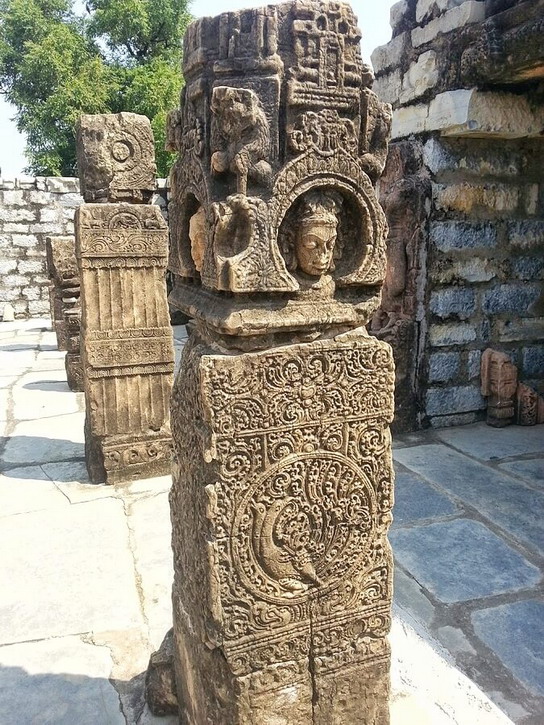

Gandeshwar temple.
It is believed that this 12th century temple was built on the ruins of a previous one.
The ghats of this temple are very popular at the time of Shivratri and Mahashivratri.
One finds there the characteristic of Sirpur, the peaceful coexistence of religions, with statues of Shiva, Vishnu, Buddha and jaïne.
It is a really peaceful and pleasant place at sunset.
Nearby, a small sanctuary was hosting Sufi music players, which we spent a moment listening to.
Sirpur market.
The exact date of construction of this huge market is not known, but it may date from the 6th century BC.
This international trade centre was ideally located on the Mahanadi River, and people came from all over the world to buy supplies here.
It is one of the oldest and largest in the world.
There were shops on the main aisles, with houses, granaries and other goods storage areas at the rear.
There were also wellness facilities, such as thermal baths, and an Ayurvedic surgical hospital. So people used to come to Sirpur for both trade and medical tourism. Patients were immersed in the baths with the medical treatment liquid.
This fact is known thanks to the very sophisticated irrigation system that was found under the whole site.

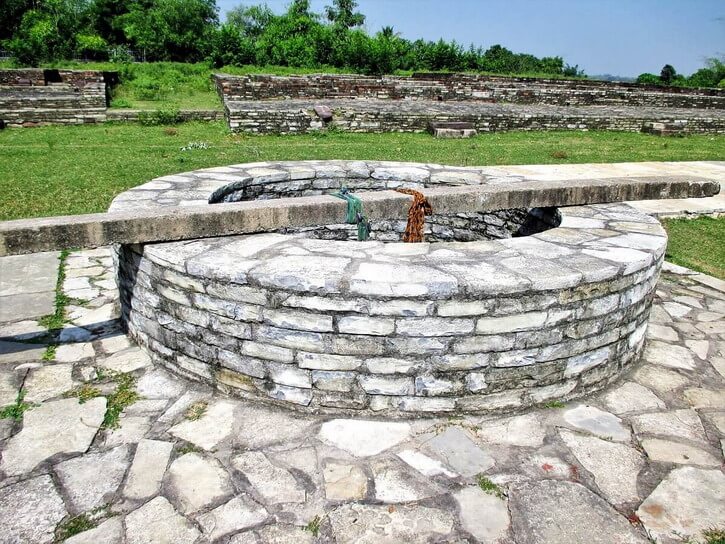
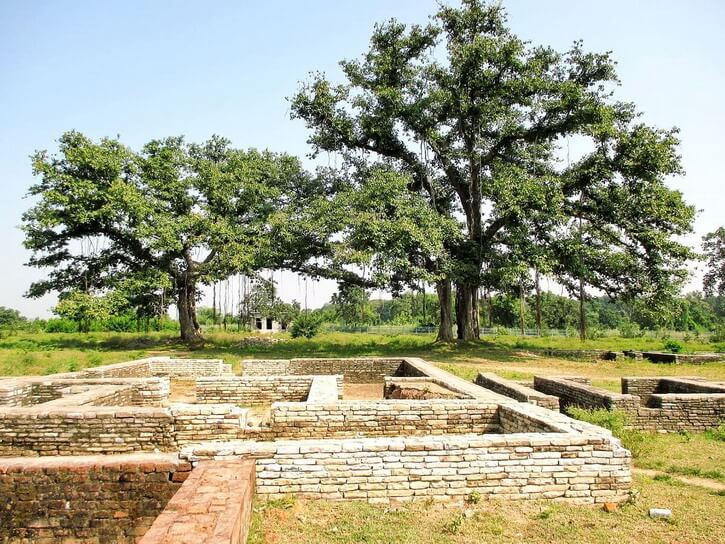
Buddha would have come here and meditated under this Bodhi tree (fig tree of pagodas).
It is on this spot that the oldest Buddha temple of Sirpur was located. There were 85 bronze images of Buddha found.

Avshesha palace.
One of Sirpur’s most recent discoveries. It will still be a little while before the site reveals its history.
Where is Sirpur in Chhattisgarh?
The distance between Raipur to Sirpur is 85kms, at the northeast (about an hour and a half drive). It’s located at 35 kms from Mahasamund – Barnawapara reserve and Valmiki ashram – and 17 kms from NH6.
How to reach Sirpur Chhattisgarh?
For your international flight to India, I recommend my favorite airline, Qatar Airways.
Then, book a flight from Delhi to Raipur, or to Vizag if you want to visit Odisha first, with Make My Trip. My Indian friends use Make My Trip mostly to book their flights and train tickets. You can also book a cab from Raipur to Sirpur with them.
>>> Check the flights or cabs here
Although a bus service exists, it would not seem very reliable, except at festivals dates. A personal vehicle seems more appropriate, in order to be able to continue towards the natural reserve of Barnawapara. Information to check on the spot, since the tourist office had placed at my disposal a vehicle with driver.
Where to stay in Sirpur?
If you wish, you can spend the night at the resort belonging to Chhattisgarh Tourism Board, Hieun Tsiang. Count 1500RP for a double room. Although ideally located a stone’s throw from historic sites, the site does not exude much charm. However, the staff is friendly, although a little sluggish. Some flowering trees improve the cold frame. The interest is to sleep like me in the room occupied by His Holiness Dalai Lama when he comes to Sirpur. Although spacious, it lacks decoration to make it a little more pleasant.
I would advise you to stay in one of the resorts of Barnawapara, 15 kms from there if you have your own transportation. However, find out about traffic conditions, as roads can be impassable due to the monsoon that has devastated them.
Book on the website my Indian friends use, Oyo, that proposes Barnawpara lodge and a wide choice of hotels in Raipur.
>>> Check the availability here
When should you visit Sirpur?
The best period is between November and March. The monsoon is over, the temperatures are pleasant without being excessive. It is also the opening period of the Barnawapara reserve.
Sirpur festivals.
Shivratri and Mahashivratri.
The temple of Gandeshwar comes to life a few days before the beginning of the religious festivals of Shivratri (July-August) and Mahashivratri (February-March).
Shivratri is especially a key moment for Shiva followers, who undertake a pilgrimage on foot to the Ganges. There they collect the sacred water that they bring back into the village temple.
Conclusion.
Sirpur is really a must of Chhattisgarh, as much by its rich past as by its vestiges. You should complete the visit with the reserve of Barnawapara, where it is pleasant to spend a few days in search of wild animals and on the tracks of Rama with Valmiki’s ashram and the native place of Rama’s sons.
Related article on Buddhism: My encounter with a famous Buddhist Oracle in a trance in Arunachal Pradesh North India.
Read more: My Chhattisgarh Travel Guide.
If you need more info, see my travel planning offer here
Do you also know Sirpur? Do you have any other advice to share?
This article may contain compensated links. Read the disclaimer of the site for more information.

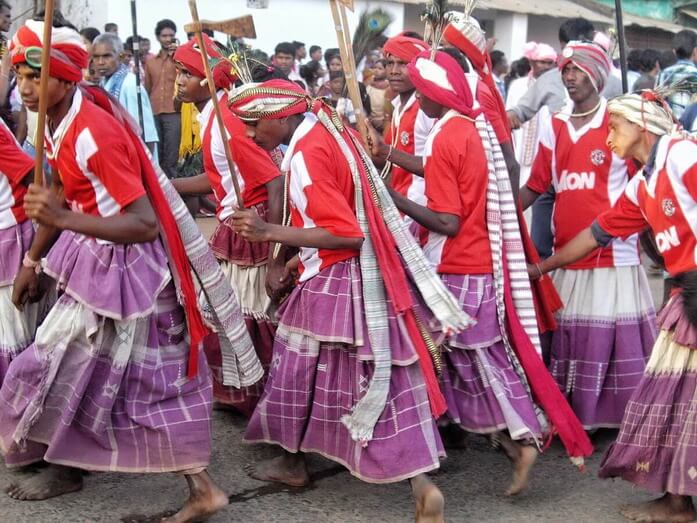
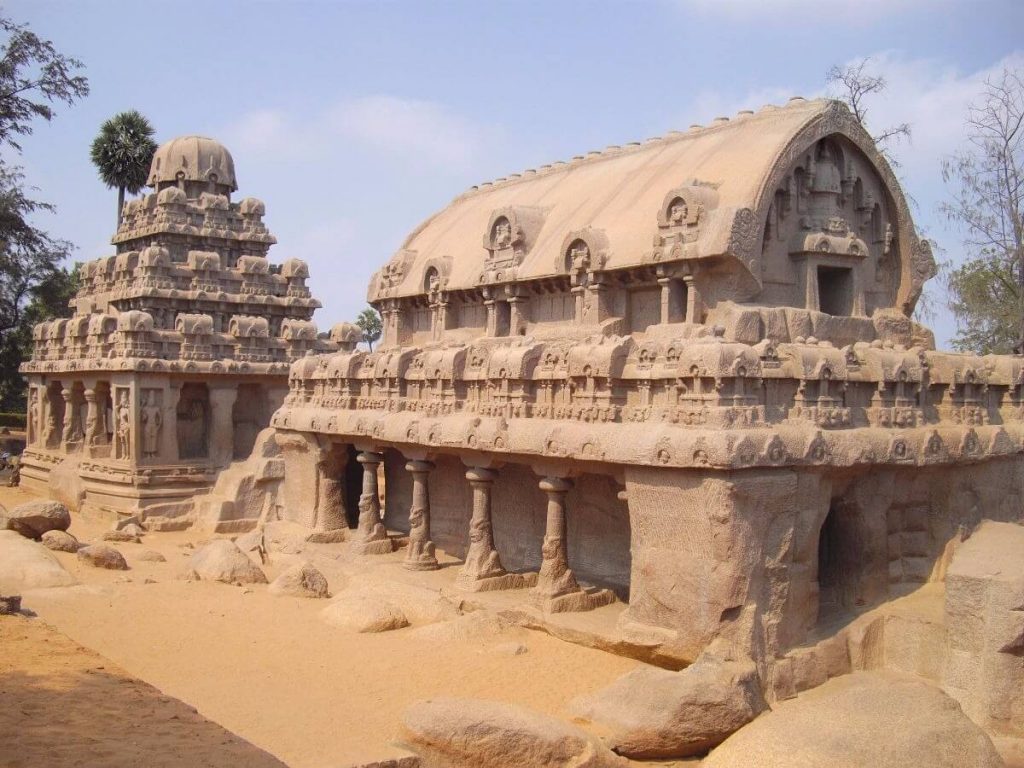
C’est une article magnifique Stephanie. Merci Jacqueline
Merci Jacqueline ! Le commentaire avait atterri dans les spams pour je ne sais quelle obscure raison.